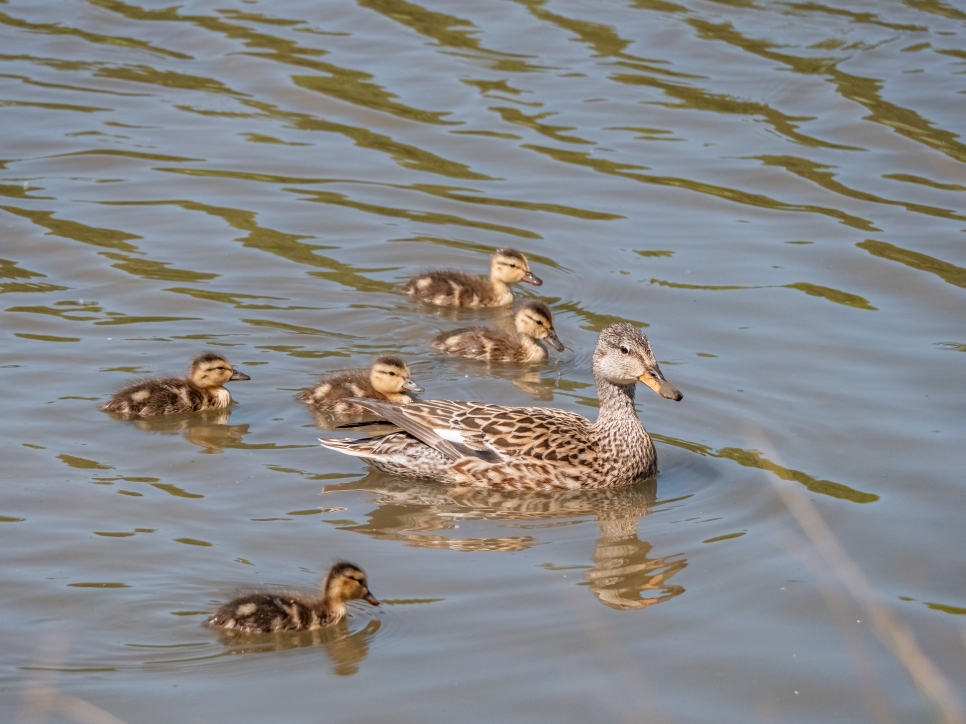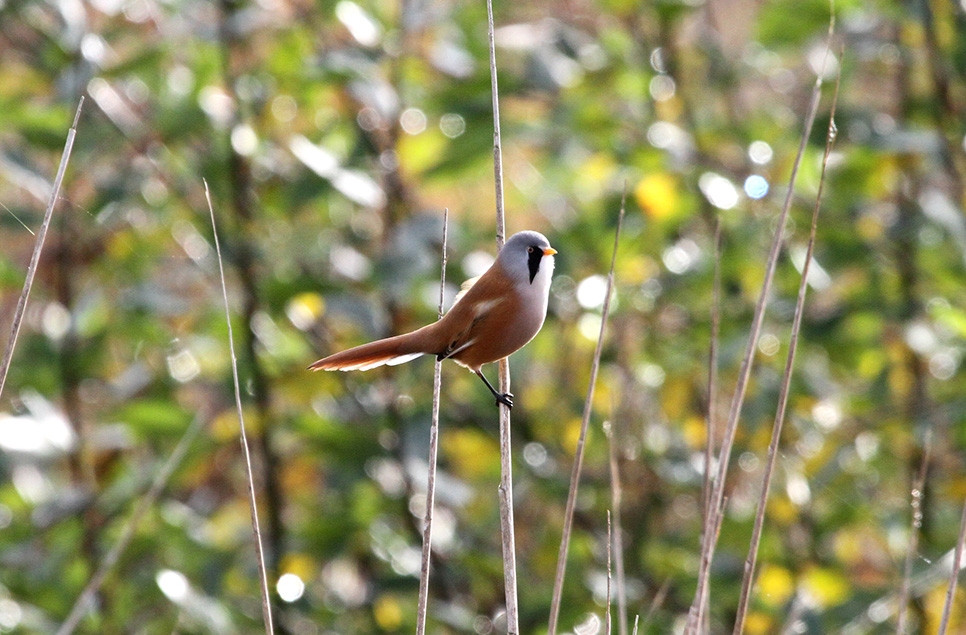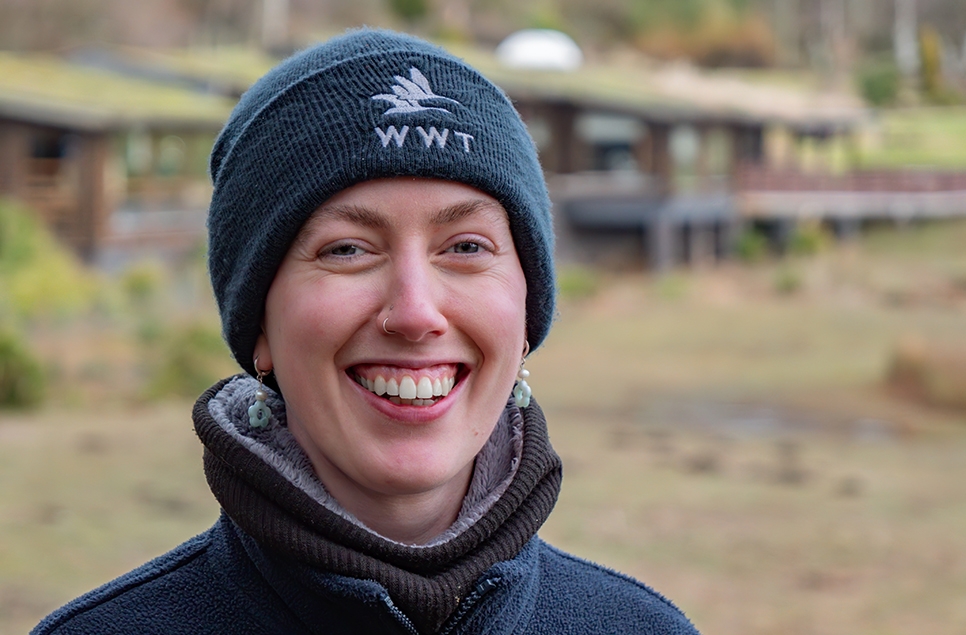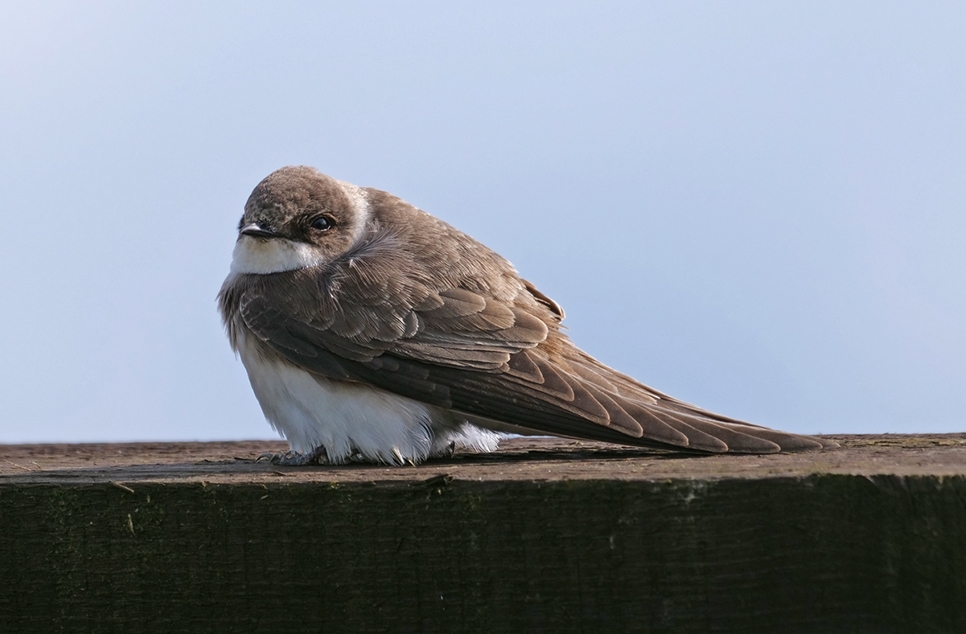Habitat works lead to baby boom on Wader Lake
A TWO-YEAR desilting project designed to bring wetland wildlife and people closer together has led to a summer duckling baby boom at WWT Washington.
Dozens of gadwall (below) and tufted duck youngsters are thriving on Wader Lake for the first time in recent memory – along with shoveler, oystercatcher, shelduck and more – thanks to the extensive works.

Across 2021 and 2022, almost 1,000-tonnes of sediment was removed from the habitat – the equivalent of nine adult blue whales.
Now, the resulting cleaner water, improved diving conditions and additional milling space is not only benefiting the hundreds of birds currently using the lake, but the visitors who enjoy observing them from the lakeside hides too.
Reserve warden Kate Ferguson (below), one of a team of staff and volunteers who monitor the wildlife at WWT Washington across the seasons, said it has been incredibly exciting to see so many broods of youngsters thriving on the lake this summer, particularly those which are uncommon there.

“Excitingly, we currently have a group of five well-developed gadwall juveniles regularly hanging around with a male and female in front of Paddy Fleming Hide.
“Last year we didn’t have any gadwall successes that we know of, so this is great news.
“These juveniles are full-sized and easy to miss as they look just like females, but with a cleaner, neater plumage.
“There are also two further gadwall broods of between five and six young, so hopefully they’ll continue to flourish and we’ll soon have even more juveniles to enjoy watching.
“Tufted ducklings are everywhere at the moment too, with at least four broods totalling 32 ducklings seen out on the water.
“To be able to sit and watch so many of them learning to dive and feed from the hides is a real treat and something that many visitors may not have seen here on the lake before.”
Wader Lake is a focal point of the 103-acre site’s wild reserve and supports thousands of resident, breeding, migratory and over-wintering birds across the year.
As well as helping to boost the breeding success of gadwall and tufted duck, the better conditions provided by the desilting have also led to fantastic views of numerous shelduck broods – with up to 21 ducklings seen at once – as well as oystercatcher, shoveler, lapwing, redshank and grey heron families.
Reserve manager John Gowland (below), who led the desilting project, added: “Wader Lake has been a focal point of our wild reserve since we opened in 1975, and is visited by thousands of birds each year.
“In that time, a huge amount of silt had built up and while it does have some benefits, we needed to remove it in order for visitors to experience nature in the way that we wanted.
“During the first phase in September 2021, we removed the silt and dug deeper areas in front of Northumbrian Water hide, at the west end of the lake.
“Water is now retained much more effectively here, even during dry spells, and this, as well as the introduction of natural perching posts, has resulted in some fantastic wildlife highlights.
“We’ve had increased kingfisher sightings and more redshank and teal regularly seen around the hide, something that was relatively uncommon before the project began, as well as a record 41 goosander roosting near the hide overnight.”
In November 2022, phase two of the project saw the middle of Wader Lake excavated to its original depth. This means it too can now hold water for longer during dry spells and fish populations will become established going forward, supporting birds including grey heron, little egret and kingfisher.
The lower parts of the lake also now retain water better, allowing wading birds to feed in the soft wet mud better during summer.
“The silt from the last phase was rehomed along the bank of Wader Lake, to the left of Paddy Fleming hide”, said John.
“This not only created a wider space in which the reserve team can carry out maintenance, but also provided extra habitat and milling space for smaller bird species such as red-listed lapwing.
“The initial works to the west of the lake were a huge success and with this new baby boom, our hopes that diving ducks such as tufted duck and shoveler would benefit from the improvements too are certainly being realised. It’s fantastic news for both our visitors and our wildlife.”

- Silt is a common material, making up 45% of average modern mud. It has particles in size between sand and clay, presenting as a soil (often mixed with sand or clay) or as sediment, mixed during movement with water. It travels through water bodies and channels, such as those around our site, where it is carried down to Wader Lake and creates a silt layer under the surface of the water. (Right: the desilting process underway in November 2022).
- WWT Washington’s Wader Lake is one of the site’s most visited habitats and there’s always a star species on show across the seasons. These include the return of the grey heron colony each January; breeding waders in spring and summer; and one the UK’s best inland freshwater curlew roosts during winter.
Ready to visit?
If you're ready to explore Washington Wetland Centre this summer and see incredible wetland wildlife for yourself, find out more and plan your visit online.



